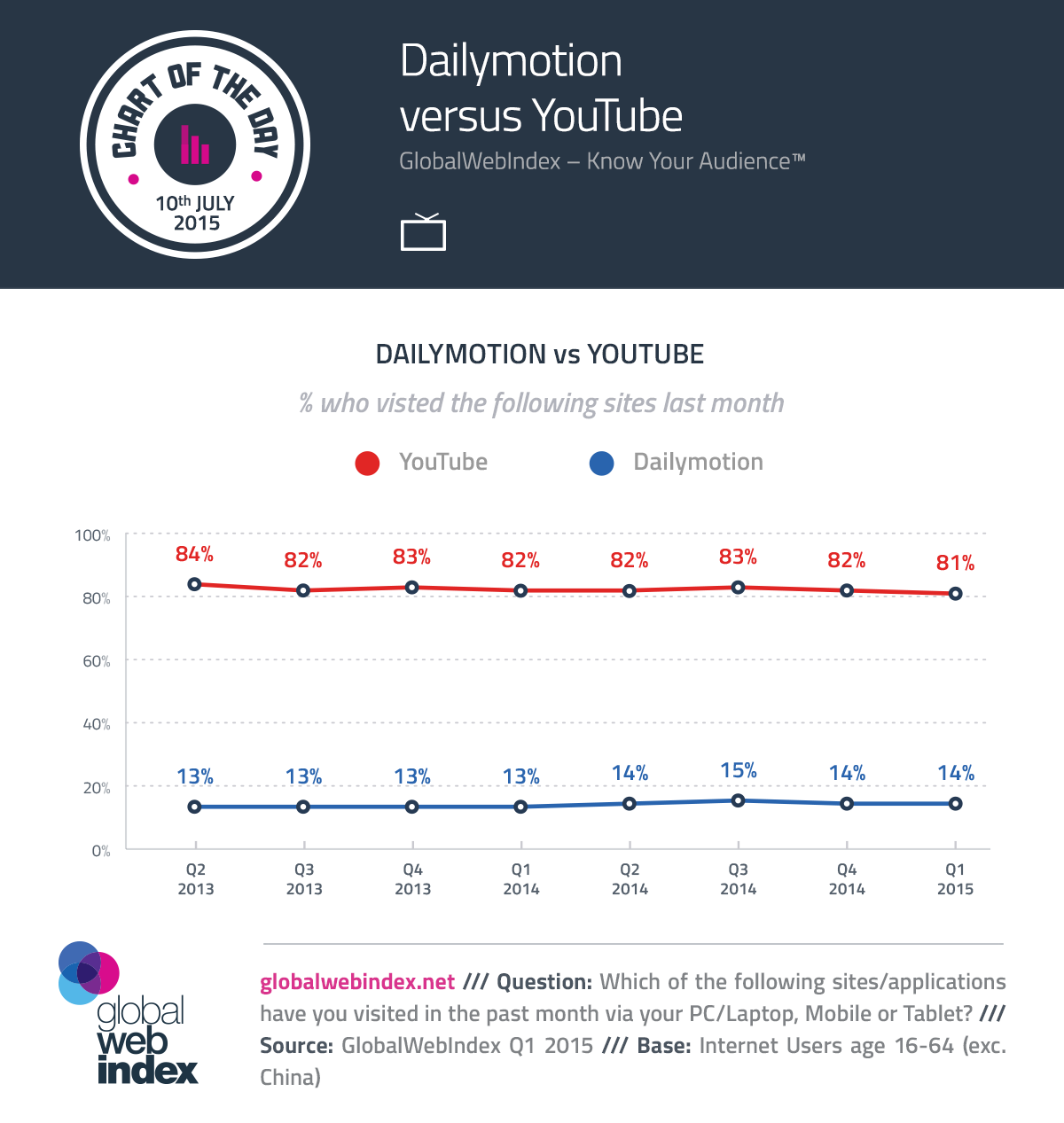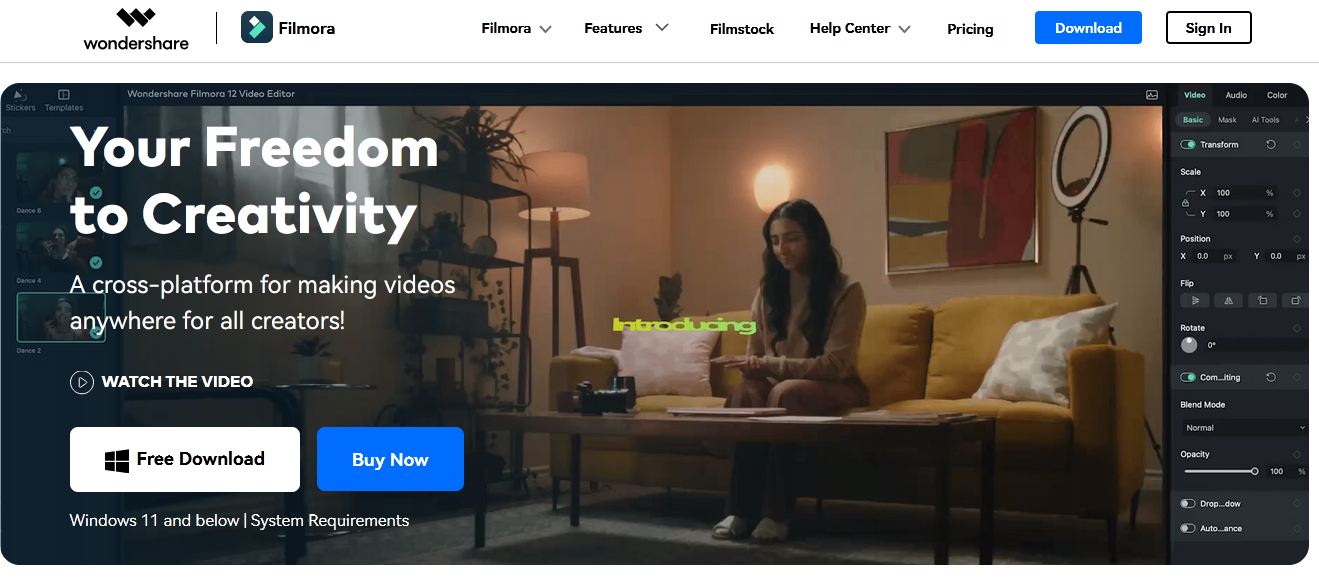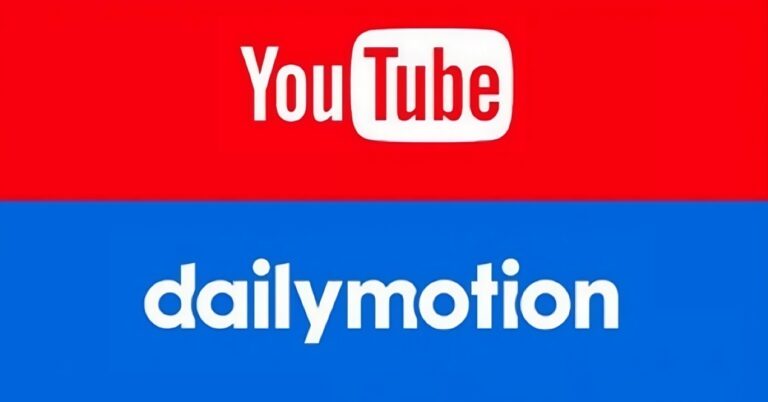When it comes to video sharing, Dailymotion and YouTube are two prominent platforms that cater to millions of users worldwide. While both allow users to upload and share videos, they come with their distinctive features, user bases, and content policies. In this post, we'll dive into an overview of these platforms, starting with a brief introduction to each, before exploring their content policies in detail. Whether you are a content creator or just a casual viewer, understanding how these platforms operate can greatly enhance your experience.
Overview of Content Policies on YouTube

YouTube is one of the largest video-sharing platforms in the world, and with its massive reach comes a comprehensive set of content policies designed to maintain a safe and fair user environment. Understanding these policies can be crucial for anyone looking to publish content on the platform. While YouTube aims to support creativity and freedom of expression, it also sets boundaries to protect users and comply with legal requirements.
Here’s a breakdown of key aspects of YouTube's content policies:
- Community Guidelines: YouTube has an extensive set of community guidelines that outline acceptable behavior and content. This includes prohibitions on hate speech, harassment, and threats, which contribute to a more inclusive community.
- Copyright Policy: Protecting intellectual property is a priority for YouTube. Users must adhere to copyright laws, and the platform employs a Content ID system that helps copyright holders identify and manage their content.
- Monetization Restrictions: To earn money through ads, creators must comply with monetization policies. This means adhering to content guidelines regarding violence, adult content, and harmful activities.
- Age Restrictions: Some content may not be suitable for all ages, leading YouTube to implement age restrictions on certain videos. This is aimed at protecting younger audiences from inappropriate material.
- Spam, Deceptive Practices, and Scams: YouTube actively works to prevent spam and misleading content, including clickbait titles and scams, ensuring a more trustworthy platform for viewers.
Adherence to these content policies is monitored through a mix of automated systems and manual reviews. This means that while users can upload a diverse range of content, videos may be subject to age restrictions, removal, or demonetization based on breaches of policy. Moreover, serious violations can lead to strikes against a user’s channel, potentially resulting in account termination.
In summary, YouTube’s content policies are designed to create a balance between fostering creativity and ensuring safety and compliance. As a content creator, being familiar with these guidelines is key to navigating the platform effectively. Furthermore, understanding how YouTube applies its policies can also enhance your viewing experience, making it a more enjoyable and secure place to engage with diverse content.
Also Read This: How to Make a Card for Your Teacher: Dailymotion’s DIY Craft Ideas
3. Overview of Content Policies on Dailymotion

Dailymotion, a popular video-sharing platform, implements a set of content policies designed to maintain a safe and welcoming environment for users. These policies serve as guidelines for what is considered acceptable content and aim to prevent harmful or inappropriate material from being uploaded. Here’s a quick rundown of Dailymotion's key content policy elements:
- Copyright Compliance: Dailymotion takes copyright very seriously. Users are expected to only upload content that they own or have permission to use. Violations can lead to video removals or even account termination.
- Community Standards: Content that is hateful, harassing, or promotes violence is strictly prohibited. Dailymotion strives to foster a positive community by encouraging users to report any offending material.
- Adult Content: While some mature content is allowed with age restrictions, explicit adult material is generally banned unless properly classified.
- Spam and Misleading Content: Dailymotion discourages spammy uploads and misleading titles or thumbnails. These practices not only misinform viewers but also degrade the overall user experience.
- Privacy and Personal Information: Users must respect the privacy of others. Sharing personal information without consent is against Dailymotion's policies, ensuring that individuals' rights are respected.
To ensure compliance with these policies, Dailymotion employs a system of community reporting alongside automated content moderation. This means that users play an active role in keeping the platform safe, reporting suspicious or inappropriate content when they come across it.
Also Read This: Tips for Accessing Global Music Tracks on Dailymotion Platforms
4. Key Differences Between Dailymotion and YouTube Content Policies

While both Dailymotion and YouTube aim to provide an engaging and safe environment for video sharing, their content policies differ in several ways. Understanding these differences can help content creators choose the platform that aligns best with their needs. Here are some of the key distinctions:
| Aspect | Dailymotion | YouTube |
|---|---|---|
| Content Moderation | Primarily community-driven reporting system with some automated moderation. | Combines community reporting with advanced AI tools for better content detection. |
| Copyright Enforcement | Moderate enforcement; allows users to dispute claims but with less robust tools than YouTube. | Strong copyright claim system with Content ID that automatically identifies copyrighted material. |
| Age Restrictions | Allows some adult content under strict guidelines and requires age verification. | Has a detailed system for mature content, requiring content creators to explicitly label videos. |
| Revenue Sharing and Monetization | Offers limited monetization options compared to YouTube. | Extensive monetization programs, including ad revenue sharing, member subscriptions, and Super Chats. |
These differences highlight the varying priorities and approaches of each platform. For example, YouTube's robust copyright enforcement and monetization potential may cater to professional content creators, while Dailymotion's more relaxed rules can appeal to those looking for a less competitive environment. Ultimately, your choice between the two will depend on your content style, target audience, and personal preferences.
Also Read This: How to Use Twitter on Mobile Easy Tips for Engaging with Followers
5. Content Moderation Processes on Both Platforms

When it comes to content moderation, both Dailymotion and YouTube have established processes aimed at ensuring a safe and respectful environment for their users. However, they approach these tasks in different ways, which can significantly affect creators and viewers alike.
YouTube utilizes a combination of automated systems and human reviewers to manage content moderation. Their artificial intelligence (AI) algorithms scan uploaded videos for any violation of community guidelines, which can include issues like hate speech, graphic content, or copyright infringement. Once flagged, these videos may be reviewed by a human moderator for a final decision. This dual approach helps YouTube manage the vast amount of content uploaded every minute, but it isn’t without its flaws. Many creators have expressed frustration over the AI mistakenly flagging their content, which can lead to demonetization or removal.
In contrast, Dailymotion tends to emphasize a more human-centric approach to moderation. While they also use automated tools to detect inappropriate content, a significant portion of their moderation relies on human review. This can lead to a more nuanced understanding of context, reducing the number of false positives that content creators might face. However, it might also lead to slower response times when dealing with flagged content, which can be frustrating for users who want quick resolutions.
Both platforms encourage users to report content that they believe violates policies. YouTube boasts a robust reporting feature that allows users to submit complaints regarding specific videos or channels. Dailymotion offers a similar option, but it tends to be less prominent and may not be utilized as frequently by users. This difference can impact how community-driven moderation is conducted on both platforms.
Ultimately, while both video-sharing giants have systems in place to enforce their content policies, the effectiveness and efficiency of their moderation processes can vary. Creators should consider these factors when choosing which platform aligns better with their content strategy.
Also Read This: How to Make Beautiful Eye Makeup: Easy Tips on Dailymotion
6. Impact of Content Policies on Creators
Content policies on platforms like Dailymotion and YouTube don't just shape community standards; they profoundly affect creators and their ability to thrive. Understanding the nuances of these policies can help content creators navigate their respective platforms more successfully.
On YouTube, the extensive guidelines and policies can often feel like a double-edged sword. While they help maintain a safe environment, they can be quite restricting. Many creators find themselves grappling with issues related to monetization. For instance, videos that touch on sensitive topics like politics or social issues might face demonetization due to strict advertiser guidelines. This can lead to a feeling of censorship, where creators must constantly tread carefully to avoid penalty.
- Pros: Access to a massive audience, monetization opportunities, and a diverse range of content.
- Cons: Risk of content removal, demonetization, and ongoing pressure to adhere to ever-changing guidelines.
On the other hand, Dailymotion offers a slightly more flexible environment for creators, especially those working with niche audiences or specialized content. While its audience base is smaller than YouTube's, Dailymotion’s policies are generally seen as less stringent. This can be particularly beneficial for creators who feel stifled on larger platforms. There's more room for creative expression without the fear of immediate backlash or content removal.
- Pros: More lenient content policies, supportive community, and fewer instances of algorithm-driven demonetization.
- Cons: Smaller audience reach, fewer monetization options, and less exposure for emerging creators.
In conclusion, the impact of content policies can vary significantly between Dailymotion and YouTube. For creators, understanding these differences is crucial in assessing which platform aligns best with their content style, audience, and overall goals. Whether they favor the massive audience of YouTube or the more approachable nature of Dailymotion, every creator must weigh the pros and cons of each platform's content policies in relation to their work.
Also Read This: How to Block a Channel on YouTube and Manage Your Feed Effectively
7. User Experience and Content Discovery
When it comes to user experience and content discovery, both Dailymotion and YouTube offer unique approaches that can significantly affect how viewers interact with their platforms. Let's explore what each platform provides and how these features might influence your content journey.
YouTube is known for its powerful algorithms and personalized recommendations. The platform uses a complex system that analyzes user behavior to suggest videos that align with their interests. Here are some key aspects of YouTube's user experience:
- Recommendation Algorithms: YouTube’s algorithm tracks what you watch, how long you watch it, and even what you search for, delivering tailored suggestions.
- Subscriptions: Users can subscribe to channels, ensuring they receive updates on new content from their favorite creators.
- Trending Section: This feature showcases popular videos, making it easier for users to discover what's currently in vogue.
- Playlists: YouTube allows creators to curate playlists, creating a more structured viewing experience for audiences.
However, this powerful discovery system can sometimes overwhelm new users with too much content or, conversely, create echo chambers where users only see videos that reflect their existing interests. Navigating through the vast library of videos may feel daunting for those who don’t want the algorithm to dictate their viewing experience.
Dailymotion, on the other hand, has a different approach, aiming for a blend of curated content and community vibes. Here are some distinct features of Dailymotion:
- Curated Playlists: Dailymotion features playlists made by users and staff, providing a sense of editorial oversight.
- Channels: While users can subscribe to channels, there's a lesser degree of algorithm-driven recommendations. This can foster a more community-oriented experience.
- Explore Section: The Explore feature introduces users to diverse content rather than just trending videos, potentially allowing for broader content discovery.
- Content Categories: Videos are categorized clearly, making it simple to explore through genres that align with a user’s interests.
Your experience on Dailymotion can feel less overwhelming, but it may come at the cost of discoverability. The site lacks the kind of robust, predictive algorithms that make YouTube’s content feel so personalized. Instead, users might have to be more proactive in searching and browsing.
In conclusion, whether you're a casual viewer or an aspiring creator, the choice between Dailymotion and YouTube can significantly influence your content experience. YouTube impresses with a highly effective recommendation system, while Dailymotion caters to a more curated viewing experience. It ultimately comes down to what type of interaction you prefer on your content journey.
8. Conclusion: Which Platform is More Lenient?
As we wrap up this comparison of Dailymotion and YouTube, it’s crucial to reflect on which platform embodies a more lenient content policy, particularly regarding user-uploaded videos and engagement.
YouTube is often seen as having stricter content policies, primarily because its massive audience and engagement levels necessitate cautious oversight. With a larger volume of content comes greater scrutiny to ensure that community guidelines are upheld. This can sometimes mean that creators face more challenges, from dealing with stricter copyright strikes to navigating demonetization due to content violations.
Meanwhile, Dailymotion provides a more relaxed environment that might appeal to some creators, especially those looking for fewer restrictions. Its community guidelines are generally more forgiving, allowing creators to upload a broader range of content without the constant worry of facing harsh penalties. However, it’s worth noting that while Dailymotion offers more leeway, the platform's smaller audience can limit a creator's reach and monetization opportunities. This results in a double-edged sword where leniency comes with a trade-off in visibility.
In summary, if you're prioritizing audience reach and potential earnings, YouTube’s robust system may serve you best despite its stricter policies. Conversely, if you’re looking for flexibility and a less intimidating approach to uploading content, Dailymotion could be the way to go. Ultimately, the "leniency" of a platform will depend on your individual goals as a creator and what you hope to achieve in the vast landscape of online video sharing.
 admin
admin








